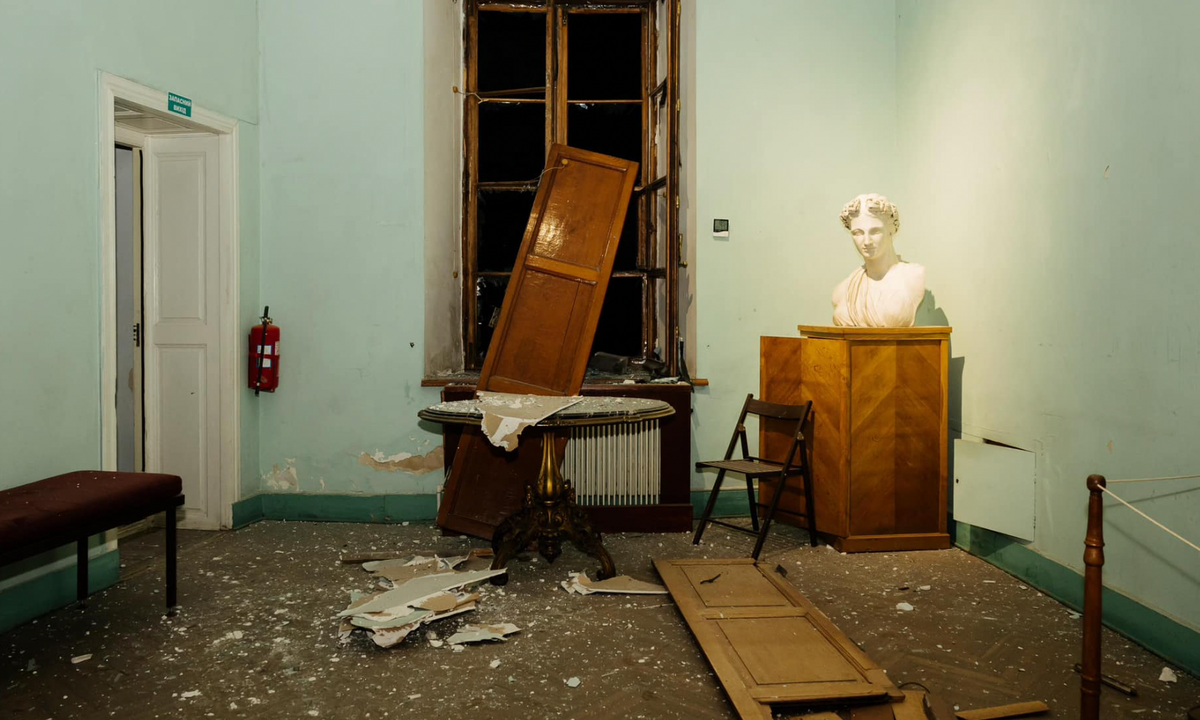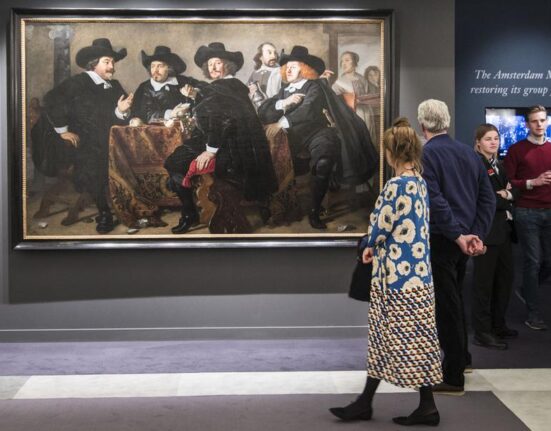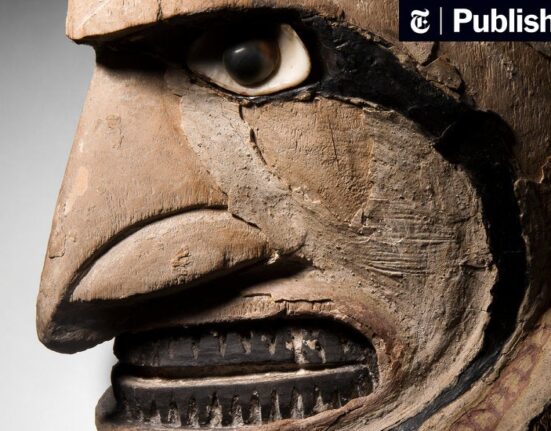On 5 November, a Russian missile and drone strike against Odesa, the historic Unesco-listed port city on Ukraine’s Black Sea coast, rocked the Odesa National Fine Arts Museum as it was preparing to mark its 124th birthday.
The museum said in a statement that all events scheduled for the anniversary were cancelled and the “consequences of the damage” were being assessed. It listed seven exhibitions that “due to damage to the museum, we can no longer exhibit”.
Photos posted on the museum’s Facebook page showed shattered glass and crumbled plaster on the floors, cracked walls and paintings knocked down. The museum is located in the Potocki Palace, a 19th century landmark.
Oleksandra Kovalchuk, the museum’s deputy director for development, wrote on her Facebook page: “I think that there will be many posts about our museum. Please do not forget to wish it a Happy Birthday.”
Ukraine’s ministry of culture stated that the museum building is in “Unesco’s protection zone” and that at least ten other buildings were damaged.
Oleh Kiper, the Ukrainian military governor of Odesa, wrote on Telegram that “the Russians ‘congratulated’ our architectural monument with a rocket that hit nearby”.
He also stated that the heart of the collection of the Museum of Fine Arts was safe. “The Odesa regional state administration together with the museum and the Museum for Change NGO evacuated most of the collection in advance,” he wrote, referring to an organisation founded in Odesa in 2017 that is now devoted to helping museums around Ukraine save their collections.
Odesa’s centre was added to Unesco’s list of endangered world heritage in January 2023 after a direct appeal by Ukrainian President Volodymyr Zelensky. Unesco’s liaison office in Kyiv wrote in a tweet on Monday that it “strongly condemns the attack”, adding: “Cultural sites must be protected in accordance with international law.”
The city has ancient Greek roots and was under Ottoman rule for over 250 years. It came under control of the Russian Empire during the reign of Catherine the Great. Odesa is known for its Italian and French-influenced architecture and as the site of Sergei Eisenstein’s seminal massacre montage in the 1925 film Battleship Potemkin on steep tsarist-era steps leading from the boulevard to the sea.
Russian President Vladimir Putin, who launched Russia’s invasion of Ukraine on 24 February 2022, said on 5 October at his annual Valdai International Discussion Club meeting with analysts and journalists that “Odessa is a Russian city.”
The Odesa National Fine Arts Museum had raced to save its collection as Russian tanks rolled into Ukraine last year. Kovalchuk has addressed American and European audiences to raise awareness of Russia’s destruction of Ukraine’s cultural heritage. The city had initially escaped the severe bombing seen by other cities such as Kharkiv at the beginning of the invasion, but Odesa’s cultural and strategic importance, not least its proximity to the Black Sea and Crimea, made it vulnerable from the outset.
The city’s Transfiguration Cathedral was damaged by a Russian strike in July—Russia’s ministry of defence said it was hit by a Ukrainian air defence missile—shortly after Russia pulled out of an international agreement that was meant to allow safe passage via the Black Sea for agricultural products from both countries, and began targeting Odesa’s port and central infrastructure.







